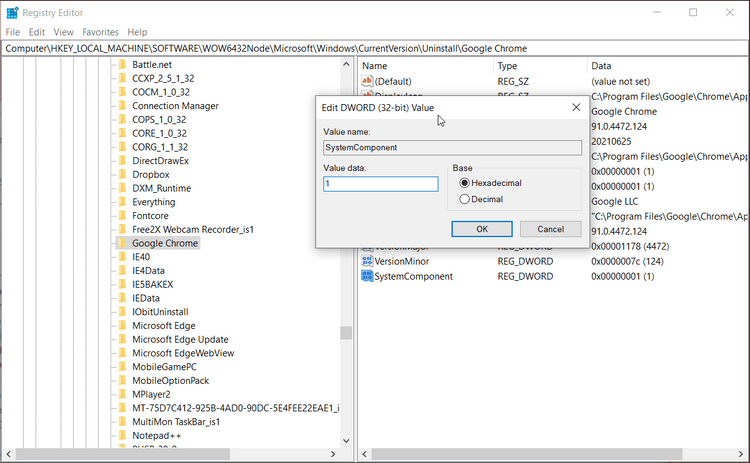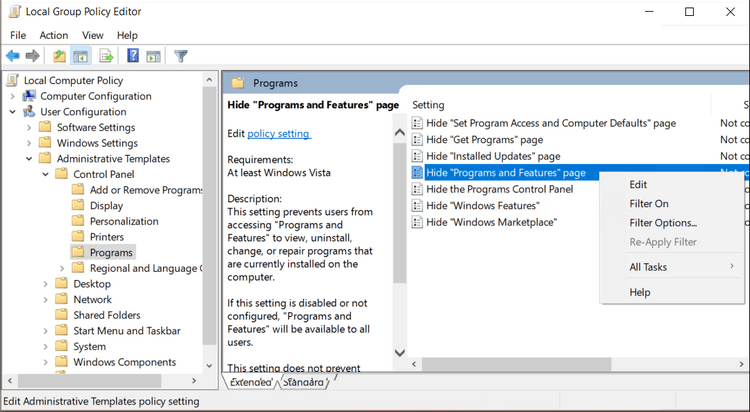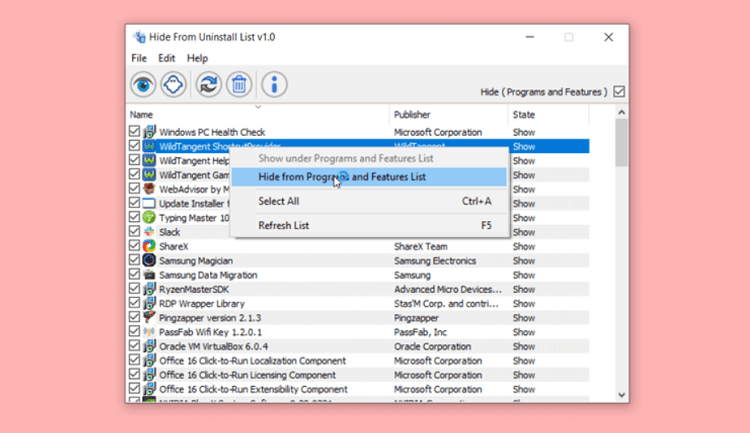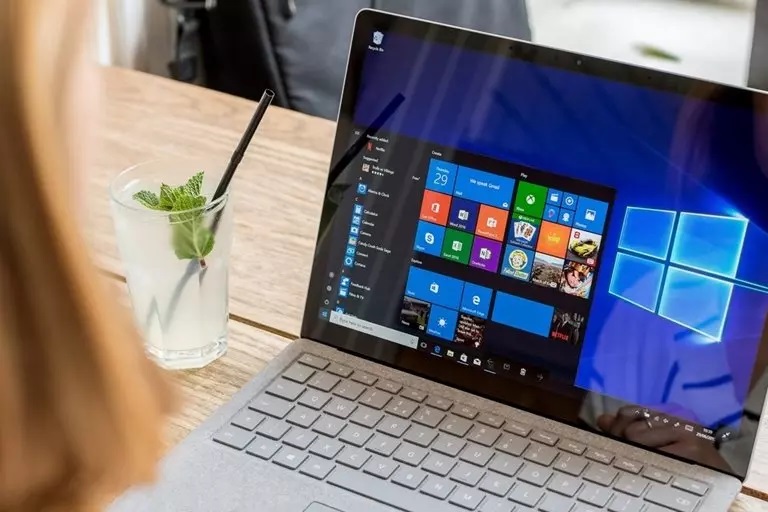How To Hide Programs Installed In Windows 10?
If You Do Not Want Anyone To Know About The Programs You Have Installed On Your Windows, You Can Easily Hide The Installed Programs In Windows 10.
When you install an application on your computer, Windows 10 displays it in the Programs and Features section in the Control Panel and the Apps & Features section in Settings.
Some Windows users do not want anyone to know what programs they are using, especially if the system is shared with other users. His article will introduce three valuable solutions for hiding your installed desktop applications from other system users.
Windows 10 does not provide a direct way to hide installed programs from the control panel and Windows settings, But this can be done by changing the Group Policy Editor.
Also, if you are uncomfortable using these two editors, you can use the Hide From Uninstall List program to hide all your installed programs.
Why should we hide programs in Windows 10?
There are various reasons why users need to hide programs in Windows. Here are some of the reasons:
- If you want to install a parental control or child monitoring program without informing your child, you do not want your child to see it in the list of programs and then remove the app from the computer.
- If you are sharing your computer with friends or family and want to restrict the use of a program in a certain way or make it inaccessible to others, hiding the installed programs in the control panel may be helpful.
- If you are bored and want to enjoy playing on the system and get energy between working hours, hiding the installed game is the best way to get around your angry boss.
Regardless of the reasons, the methods mentioned in this article will help you hide your installed programs from others. These methods are only for desktop applications and do not work for UWP (Windows Universal Platform) applications installed from the Microsoft Store.
Hide programs in Windows 10 using Registry Editor.
Many tricks are in the Windows registry, one of which allows you to hide certain programs in the control panel. His trick involves creating a new DWORD value in the Windows registry. ote that incorrectly editing registry entries can disrupt your system.
To prevent this, it is best to create a Restore Point before following the steps below. System Restore helps undo negative changes and restore the system to its original state.
Create a restore point.
Follow the steps below to create a restore point in Windows:
- In the Start menu, type Restore Point and click Create a restore point.
- The System Properties window will open in the System Protection tab. Lick Create at the bottom of the window.
- After the notification window appears, write a short description of the restore point. Windows will specify the date and time it was created.
- Click Create. Click and give Windows a few moments to create a restore point.
Hide programs with Registry Editor.
Press the Windows + R shortcut keys to open the Run window. The Run command Regedit is entered in the input box and the OK button is used. Confirm the displayed notification to continue. In n the Registry Editor, go to the following:
| HKEY_LOCAL_MACHINE \ SOFTWARE \ Microsoft \ Windows \ CurrentVersion \ Uninstall |
For 32-bit applications installed on a 64-bit computer, go to this section instead:
| HKEY_LOCAL_MACHINE \ SOFTWARE \ Wow6432Node \ Microsoft \ Windows \ CurrentVersion \ Uninstall |
You can enter the above addresses in the editor’s address bar to increase speed instead of manually scrolling. If you do not find the program you are looking for at the first address, go to the second address.

Next, you need to specify the program folder that you want to hide.
For example, we want to hide the Google Chrome browse in this article. To do so, right-click on the Google Chrome fold, and select N, ew, and then DWORD (32-bit) Value.
Change the Value name to SystemComponent. Click on SystemComponent twice and then in the box Value data value of 1 Enter and the OK button. You can now close the Registry Editor window.

Chrome is now hidden from all Windows directories. To be sure, you can go to the control panel to check on this issue. You must perform the above steps to hide other programs and delete SystemComponent for each. You can also block other Windows users from accessing the Registry Editor to ensure no one is making your changes.
It is convenient to use the registry editor to hide a program. However, if you try to hide multiple programs, you will lose a lot of time. Fortunately, you can get help from the Group Policy Editor to hide all your Windows applications at once.
Hide apps in Windows 10 using Group Policy Editor.
Group Policy controls the work environment of user and computer accounts. In essence, the policy group provides centralized management and configuration of operating systems, applications, and user settings in the Active Directory environment.
A set of policy group configurations is called an Object Policy Group (GPO). Policy settings are managed by setting the GPO.
Policy Editor Group (GPE) can hide all applications from the Uninstall menu in Windows 10. Although GPE is only available in the Pro version of Windows 10, it can also be enabled in the Home version. Follow the steps below to activate Group Policy Editor in the Home version of Windows 10.
Enable Group Policy Editor in the home version of Windows 10
Enter the following code in Notepad and save it in Enabler.bat format:
| echo off @ ” pushd”% ~ dp0% dir / b% SystemRootservicing \ Packages \ Microsoft-Windows-GroupPolicy-ClientExtensions-Package ~ 3 * .mum> List.txt % dir / b% SystemRoot servicing \ Packages \ Microsoft-Windows-GroupPolicy-ClientTools-Package ~ 3 * .mum >> List.txt % for / f %% i in (‘findstr / i. List.txt 2 ^> null) do dism / online / norestart / add-package: “% SystemRoot ” servicing \ Packages \ %% i pause |
Right-click on the BAT file you created and select Run as administrator.
Next, the command window will open. Pressing any key to continue and exit the command window requires pressing a button on the keyboard.

Now that you have GPE enabled, you can hide those programs. To do this, follow these steps:
To open the Run window, press the Windows + R shortcut keys and enter gpedit.MSC and press Enter. You can also search for gpedit.MSc in the Start search bar. He goes to the following location:
|
Double-click the Hide “Programs and Features” page in the right-hand column. Lick Enabled in the pop-up window.
Click Apply and OK to save the changes.

Now, if you go to Programs and Features from the control panel, you will see the message Your system administrator has disabled programs and features, and you will not give any of the programs installed on Windows. Here are significant drawbacks to using this method:
- All installed programs are invisible.
- The message shown in Programs and Features indicates that you intend to hide the apps.
To prevent these problems, you can use third-party apps built to hide apps from the Windows Control Panel and settings and do not have any of the above disadvantages. To show apps again, edit the policy and select Not Configured.
Use Hide From Uninstall List to hide applications.
Hide From Uninstall List is a free Windows tool for hiding one or more software stops in Programs and Features and Apps and Features settings.

This method is better than the previous one because you can hide programs from view without a message notifying them that they are hidden. To use this app, download and run it. Idee From Uninstall List is a portable application that does not require installation.
Right-click on the program and select Hide from the Programs and Features list.
To hide all programs, click Edit and select Select All.
Right-click on the names of the apps you want to hide and select Hide from the Programs and Features list. To display the app again, right-click on it and choose Show under the Programs and Features list.
Because it is a portable app, it is an excellent tool for hiding apps without leaving a trace in the control panel. However, anyone familiar with the Windows operating system can find the installed programs in the C: \ Program Files folder.

